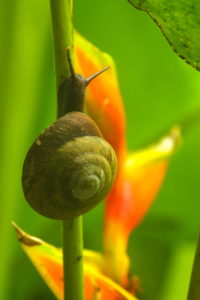We have much more to do and your continued support is needed now more than ever.
How Hurricane Maria Proved the Importance of Natural Infrastructure

It has been a year since Hurricane Maria made landfall in Puerto Rico, leaving behind a trail of devastation. With winds of 155 mph, the Category 4 hurricane not only obliterated the island’s power grid and about 80 percent of its crops, but also left more than 60,000 homes without roofs and took the lives of nearly 3,000 individuals — a figure a hundred times higher than the initial estimate.
Today, Puerto Ricans are still working relentlessly to recover from the chaos from the deadly storm, facing obstacles that range from potable water shortages and power outages to outbreaks of post-traumatic stress disorder and depression. The people of Puerto Rico, or Boricuas, are taking all of the lessons they learned from this terrible experience and using them to build and improve their resilience to climate change on their path towards recovery.

One of the lessons they are trying to underline and promote is that natural infrastructure is a key part of building resilent coastlines, which they witnessed firsthand during Hurricane Maria.
After the Hurricane’s catastrophic arrival, two areas that experienced severe flooding were the Río Grande de Manatí and Río Grande de Arecibo basins. Nonetheless, the Caño Tiburones wetland mitigated the impact of these extreme inundations on neighboring communities by absorbing a significant amount of the water overflowing from the basins.
Caño Tiburones wetland, located in the Carso Norteño region, is the largest wetland in Puerto Rico. Home to over 200 species of birds and 26 insect families, Caño Tiburones absorbs ground and surface water flows, helping to diminish the intrusion of saltwater on the aquifers in the area. This wetland is also essential for the well-being of the commercial fisheries in the area, serving as a nursery for the commercial fish they catch.

Throughout the 1990s, only 2,805 hectares of the wetland had been declared as a natural reserve – contrary to what the Act 314 of 1998 mandated. In 2015, a group of concerned citizens and representatives from the Puerto Rican Ornithological Society (SOPI, from its name in Spanish, Sociedad Ornitológica Puertorriqueña, Inc.) filed a demand highlighting the role that the wetland plays during hurricanes and how it benefits both local wildlife and the resilience of the surrounding human communities. Thanks to their efforts, in August 2018 a judge ordered the protection of the entirety of Caño Tiburones wetland – a victory for all who call the island home.

To minimize further threats from storms, we must decrease the pollution that is fueling their increasing intensity and cut greenhouse gas emissions. One way of doing this is by requiring all major emitters to pay per ton of carbon released into the atmosphere, which will send a strong price signal that incentivizes and speeds up the shift to a cleaner economy that is safer for wildlife and people alike.
Moreover, protecting and restoring natural infrastructure such as Caño Tiburones wetland is essential if we want to stand a chance against natural disasters and the growing impacts of climate change. This past year, Puerto Ricans have not only showed their immense fortitude in the face of adversity, but they have also taught us that we need to start improving our resilience and climate change adaptation if we want to prevent catastrophes like Hurricane Maria.





















